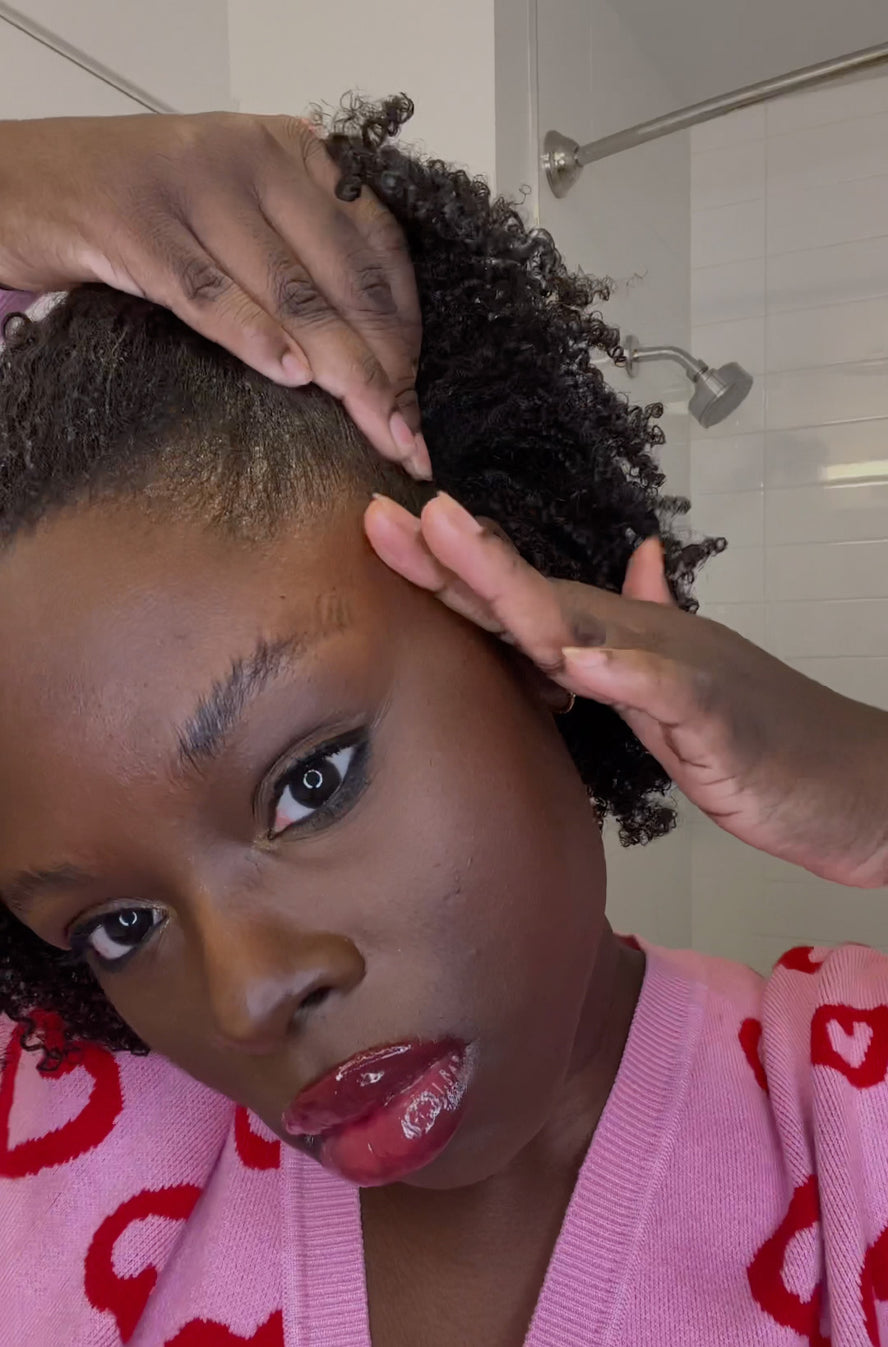Hair loss is a frustrating condition to diagnose and live with—and to make matters worse, it comes in many forms. If you’re a purveyor of tight protective hairstyles or hair extensions, you may be aware of your potential for developing traction alopecia. We’re here to break down exactly what this term means, what causes it, and how to reverse the damage if it happens to you.
What is traction alopecia?
The term “alopecia” means loss of hair, so any of these distinctions—androgenic alopecia, alopecia areata, or cicatricial alopecia—refer to different types of hair loss. Traction alopecia is a specific type of hair loss that is caused by repeated pulling at the hair, which in turn damages the follicle. Most often, this type of hair loss shows up around the hairline, edges, or nape of the neck.
What causes it?
Any type of hairstyle that’s particularly tight, especially protective styles, are known to be tough on the hair follicle. This can include slicked-back ponytails, braids, twists, cornrows, locs, and extensions—especially if you are wearing these styles often and repeatedly.
The irony is not lost on us: oftentimes, the styles meant to protect our mid-lengths and ends can wreak the most havoc on our actual hair follicles.

How do I know if I have it?
At first, traction alopecia might not show up as actual hair loss. Instead, you might see tiny red bumps around the hairline and crown that look like pimples—but in reality, these are inflamed hair follicles. Left untreated, these bumps will lead to hair loss in the affected, strained areas.
A doctor can diagnose traction alopecia and help you find a remedy, so it’s important to seek professional advice as soon as you notice an issue.
Can I fix traction alopecia?
Here’s the good news: traction alopecia is both preventable and treatable if caught early enough. Prevention is all about being kind to your hairline and staying consistent with a scalp care routine:
- If you’re wearing a protective style, ask your stylist to install them as loosely as possible
- Incorporate looser styles into your rotation (e.g., wearing your hair down or rocking loose ponytails)
- Alternate the type of style you wear (like playing with the direction of your part) so that areas prone to tension get a breather.
- Exfoliate and hydrate your scalp on a regular basis with a naturally powerful scalp care routine to prevent buildup and congestion
If you believe you’re suffering from traction alopecia, see your doctor ASAP. Reducing the amount of tension on your hair follicles and using certain topical treatments can go a long way toward minimizing the damage and regrowing lost hair. Traction alopecia can cause permanent damage if left untreated for too long, so it’s important to get to the root of this type of hair loss as soon as possible.


